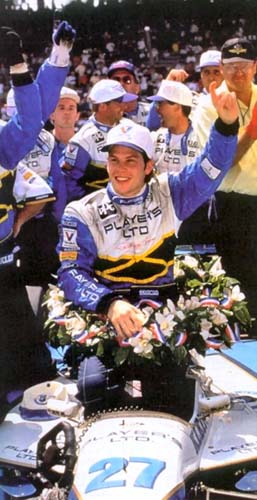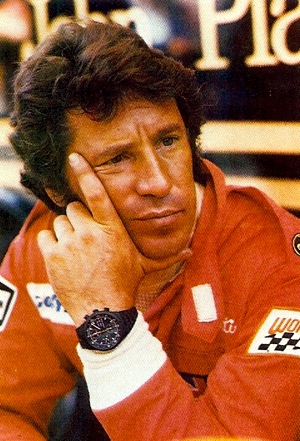LIMITED SUCCESS FOR US RACING HEROES
Numerous drivers who have triumphed in the incarnations of Indy Cars, CART and Champ Car racing, have crossed the Atlantic to drive in Formula One. Some have proved winners, while others have struggled.
THOSE WHO MADE IT
MARIO ANDRETTI
Regarded as the greatest American racing driver of all time, Mario Andretti's career saw him move back and forth between F1 and Indy Car. After winning the Indy Car Championship in 1965 and 1966, he won NASCAR's premier event, the Daytona 500, in 1967 before taking a third Indy Car title in 1969. That same year he won the Indianapolis 500. Meanwhile, he made his Formula One debut at the 1968 United States Grand Prix at Watkins Glen and immediately made an impression, taking pole position at his very first attempt. He only sporadic appearances in F1 up to 1975, whilst still enjoying success in the USA. Those cameo's in Formula One included a victory at the 1971 South African Grand Prix for Ferrari, being an Italian by birth, it was a personal triumph.
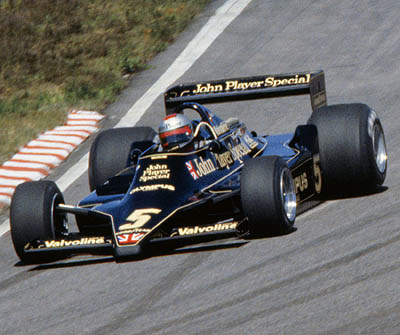 |
| Mario Andretti remains the only man to win the Indianpolis 500, the Indy Car championship, the Daytona 500 and the Formula One championship. |
JACQUES VILLENEUVE
The son of the late, great Gilles Villeneuve, Jacques had racing in his blood. After his Formula Three adventures in Italy and Japan he moved to North American Toyota Atlantic Series in 1993 where he finished third in the series. That was enough to earn him a drive in the Indy Car World Series for 1994. He took the Rookie of the Year honours that year, with a second at the Indy 500 and a first victory at Road America. In 1995, he went one better at Indy by winning the event along with the title later in the year. This success caught the eye of Frank Williams who brought him to Formula One for 1996.
His inaugural F1 campaign was a huge success as he proved himself a serious contender for the World Championship, giving his team mate Damon Hill a run for his money. He very nearly won his first race at the Australian Grand Prix, after starting from pole (just like Mario Andretti had done 28 years earlier) he was leading in the closing stages until an oil leak dropped him to second. Nevertheless he went on to win four races and went to the final round in Japan with a small chance of winning the title. Ultimately, it was Hill who took the crown, but Villeneuve went into 1997 as the title favourite. The Canadian delivered, taking 10 pole positions and 7 wins en route to the championship, and there was that infamous showdown with Michael Schumacher in Jerez. Villeneuve became only the third driver in history, after Mario Andretti and Emerson Fittipaldi, to win the Indinapolis 500, the Indy Car championship and the Formula One championship.
 |
| Jacques Villeneuve recaptured his Indy Car glory when he took the 1997 World Championship with Williams. |
JUAN PABLO MONTOYA
Juan Pablo Montoya won himself many fans in F1 for his aggressive driving style, and many critics for his failure to mount a consistent challenge Michael Schumacher for the World Championship. Nonetheless he did set the world alight on occasion during his relatively brief F1 career and is without a doubt a very successful racing driver.
After graduating from British F3 to Formula 3000 in 1997, he blitzed the championship in 1998. At the same time he was signed by Williams as a test driver. For 1999, Frank Williams opted to sign Ralf Schumacher to drive alongside side Alex Zanardi, so the Colombian headed stateside. He raced for Chip Ganassi Racing in the CART series (formerly Indy Car World Series), winning 7 races and the championship in his debut season, the first rookie success since Nigel Mansell in 1993. In 2000 his CV improved further when he won the Indianapolis 500 at his first appearance. Formula One was once again on the horizon.
Montoya would finally race for the Williams Formula One team in 2001. In only his third race he proved a star when he stormed past World Champion Michael Schumacher into the lead of the Brazilian Grand Prix. Unfortunately he was denied the victory when he was taken out by Jos Verstappen after the Colombian had lapped him. Montoya's first season was hampered by poor reliability and some erratic driving, but he managed to take his first win at Monza. 2002 saw Montoya take seven pole positions, five consecutively, but he was unable to convert any of them to victories. He was engaged in several battles with Michael Schumacher's Ferrari, but the German came out on top in a dominant season. Montoya mounted a title challenge in 2003, but his relationship with the team was strained after a misunderstanding regarding favouritism. He finally won a race again in Monaco and took another victory in Germany, but his title hopes ended when Schumacher won at Indianapolis and the Colombian was only 6th. In 2005, he joined McLaren but found himself outperformed by Kimi Raikkonen and after a depressing start to 2006, Montoya parted company with McLaren and headed to NASCAR.
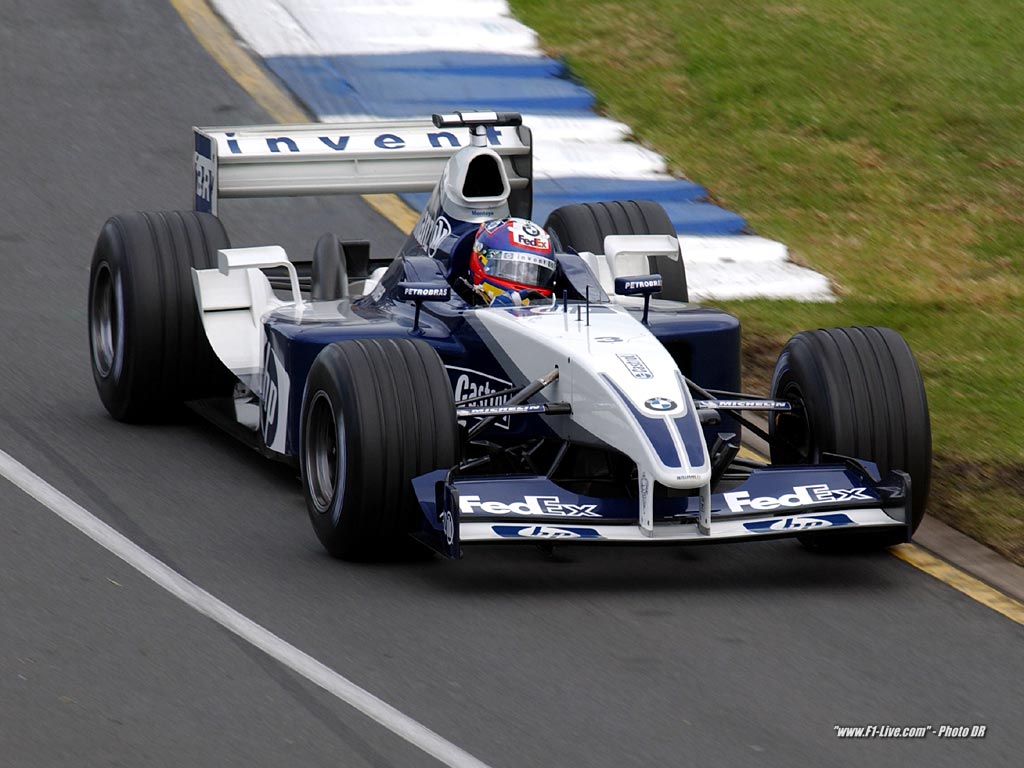 |
| Juan Pablo Montoya took 7 victories in his F1 career |
AND THOSE WHO STRUGGLED
CRISTIANO DA MATTA
To give Cristiano da Matta credit, his first F1 season in 2003 was good. The 2002 CART champion transferred to F1 with the Toyota team alongside Olivier Panis and he outscored the French veteran by 4 points. The Brazilian's moment of glory came when he led the British Grand Prix after a defrocked priest ran onto the track and the safety car came out, he eventually finished 7th. However in 2004 he was not as competitive and only scored 3 points, da Matta was replaced by Ricardo Zonta and the Brazilian returned to Champ Car (previously CART) for 2005. In 2006, he narrowly escaped with his life after a testing accident when he collided with a deer, happily he made a full recovery and eventually returned to racing.
SEBASTIEN BOURDAIS
Born in Le Mans to a racing family, Sebastien Bourdais was destined for a career in motorsport. The 2002 Formula 3000 champion was contracted to make his F1 debut with Arrows in 2003, but the team went bankrupt. So the Frenchman joined the Newman/Haas team in Champ Car, winning three races in his first season and coming fourth in the championship. 2004 was the start of a dominant period, he won four consecutive titles and 28 races, his 2007 triumph was the final Champ Car season before the merger with the IndyCar Series.
After testing with Scuderia Toro Rosso in 2006 and 2007, he was singed to race for the team in 2008. In his first race he took advantage of attrition and was running in fourth place until his engine failed three laps shy of the flag, he was still classified seventh and thus picked up two points on his debut. Throughout the season, Bourdais was comforably outpaced by team mate and future World Champion, Sebastian Vettel, with the exception of the Belgian Grand Prix, Bourdais was running third late in the race until rain began to fall and he dropped to seventh place at the finish. At Monza he qualified fourth but his car would not select first gear at the start, which would take place under the safety car, and the unlucky Frenchman would be forced to start from the pitlane. He finished 18th, 1 lap down on Vettel who won the race. He was also unlucky in Japan when he finished 6th but was unfairly handed a 25-second time penalty for a collision with Felipe Massa and was demoted to 12th. He remained with the team for 2009, but after again being outpaced by his team mate, rookie Sebastien Buemi, he was dropped after the German Grand Prix, he scored just 4 points in his tenure with the team. Bourdais has since returned to the IndyCar Series full time.
ALEX ZANARDI
One of the true heroes of motorsport, Alex Zanardi actually began his F1 career in 1991 with Jordan, as a replacement for Roberto Moreno. His three races with the team were impressive but he was not signed for 1992, due to a lack of sponsorship which the team needed. Instead he tested for Benetton, as well as replacing the injured Christian Fittipaldi at Minardi for three races (although he failed to qualify for two of them) before joining Lotus in 1993. The Italian scored his sole F1 point in Brazil but a horrendous accident during practice for the Belgian Grand Prix ended his season. In 1994, he replaced the man who took his seat, Pedro Lamy after the Portuguese suffered a frightful testing accident, the Lotus was unreliable and at the end of the year the team went into administration.
In 1996, he moved to the Indy Car World Series with Chip Ganassi Racing, he quickly became one of the most popular drivers in the sport with his exciting driving style and sunny personality. He won three races in his first season, becoming Rookie of the Year, one of which coming at the final round in Laguna Seca after an incredibly risky overtaking manouvre on Bryan Herta with just three corners remaining. He won the title in 1997 and 1998 with 12 race victories combined over the two seasons. The public and the press loved him; he made fresh pasta on David Letterman's talk show, he made amusing television
ads for Honda. He had become a household name in the United States, but he felt there was some unfinished business in Formula One
Zanardi returned to F1 in 1999 with Williams on a three-year contract but the sport had changed a lot since his last appearance. Gone were big slick tyres and wide-bodied machines, replaced by narrow-track
chassis and grooved tyres designed to reduce grip, Zanardi found this a big culture shock. The Italian would suffer a disastrous season through a combination of unreliability, driving errors and bad luck. Monza was Zanardi's high point of the season, qualifying 4th and running 2nd until his floor became loose, upsetting the cars handling. It was a shame as Zanardi could have finished on the podium. His final race in Japan ended on the first lap, summing up the Italians season. While his team mate Ralf Schumacher had 35 points, Zanardi had failed to score. Williams and Zanardi amicably decided to go their separate ways after the season.
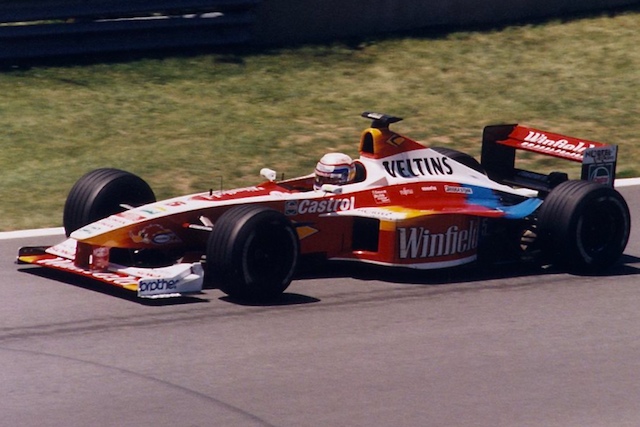 |
| Alex Zanardi has made an impact on everyone in motorsport, regardless of his unsuccessful F1 career. |
He returned to CART in 2001 without success until the Lausitzring, where he was in contention for victory until his final pitstop. Exiting the pit lane he spun into the path of oncoming 200mph+ cars. He was hit by Alex Tagliani, his car disintegrating on impact. The Italian lost both his legs, ending his open-wheel racing career. But the inspirational Italian would return to racing in Touring Cars just two years later and won 4 races before his retirement in 2009. Since then, he has turned to paracycling, winning the New York Marathon in 2011 and collecting two gold medals at the London 2012 Paralympics.
MICHAEL ANDRETTI
Perhaps the most infamous F1 attempt by one the top drivers in Indy Car Racing. Michael Andretti, the son of the great Mario Andretti, enjoyed a career in the series spanning 25 years, 42 wins and the title in 1991. With that title and a surname like Andretti, Michael was on the F1 radar, the team was McLaren.
The early 1990's saw Indy Car become recognised internationally, and some of the star names caught the eye of the top F1 teams. Williams showed interest in Al Unser, Jr. and Benetton in Paul Tracy. Michael Andretti was signed to race for McLaren in 1993, but at that time the team was in a bit of a pickle. Honda, who had brought them so much success, withdrew from the sport and Ron Dennis hoped to secure Renault engines, as used by Williams, that deal fell through. The team resorted to customer Ford V8 engines. As a result of this, Ayrton Senna was reluctant to re-sign although he eventually did so on a race-by-race basis, which turned out to be permanent. So Andretti had the mighty Brazilian as his team mate, and the young rising star Mika Hakkinen, McLaren's test driver lurking in the wings. The pressure was on.
Andretti found the technical aspects of F1 cars, active suspension and traction control hard to cope with in comparison to what he was used to in Indy Cars and he never fully got to grips with them. What hampered his chances further was his decision not to relocate to Europe, instead he commuted to races and test sessions from the USA. So essentially, if the team wanted him to test the car, he was a phone-call and a six-hour flight away, instead of a simple drive away.
 |
| Michael Andretti's F1 adventure has gone down in history as little short of a calamity. |
After his first three races, Andretti has completed a total of four laps; in South Africa, after having clutch problems on the grid, he assaulted the back of Derek Warwick's Footwork and was out. In Brazil at the start of the race he found himself a passenger in a spectacular crash with Gerhard Berger's Ferrari, then at Donington on the first lap, Andretti made an overly ambitious move on Karl Wendlinger, his race ended there and then. San Marino saw Andretti battling with Wendlinger again, but the McLaren driver spun off the circuit into retirement. A small psychological boost came in Spain the American brought his McLaren home in 5th place to earn two points, the first of his career. He managed to salvage another point in France for 6th after a fine drive from 16th on the grid. In Hungary, he may have ended up finishing second were it not for a throttle linkage failure. Heading into Monza, Ron Dennis had decided not to renew Andretti's contract for 1994; the Italian Grand Prix would be former Indy Car champions final Grand Prix and he bowed out with a third place. Andretti would return to the States the following year and he relinquished his seat to Mika Hakkinen for the final three races of 1993 having scored 7 points.
In 2008, Michael Andretti's son Marco (now an Indy Car driver himself) claimed that the McLaren team
"sabotaged" his chances at being competitive in order to replace him with Hakkinen, who would require a smaller
salary. "The reality of it was, they had Mika Hakkinen ready to come in for a
lot less than what my dad was getting paid, and that's all it was. Right then
and there, they had to make him look bad. They would
make the car do weird things in the corner electronically, stuff out of his
control." It is true that he had his fair share of reliability problems with the McLaren chassis, but Andretti's attitude didn't really do him any favours; he created the impression, rightly or wrongly, that he was so proud, so self-confident that he felt he could just turn up and get on the pace, but when it was clear that he couldn't, he made no perceivable effort to change, and to work harder with the team. Michael never raced in F1 again, but he went on to win more Indy Car races in the 1990's than any other driver.

